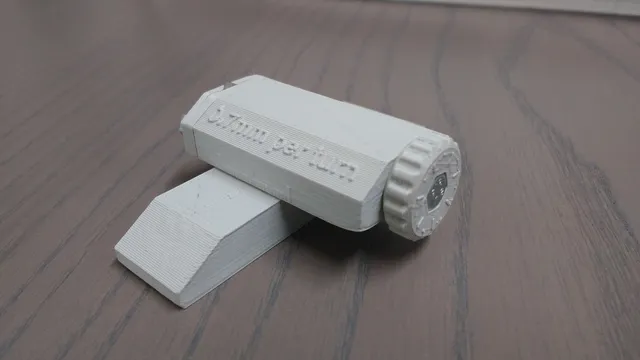
Balsa Strip Cutter
prusaprinters
A balsa strip cutter is a tool used to convert sheets of thin balsa wood into strips. Sometimes this is for cost reasons, sometimes because you actually can't buy strips of balsa. If you're planning to do any traditional RC aircraft construction, this tool is almost a requirement. It can save you hours of cutting with a ruler, and ensures that your strips are parallel. My nearby hardware store is not fantastic, so it only requires commonly available parts: Assembly of this print requires three hex-head m4x40 bolts and two m4 nuts. Non hex-head will also work, but you will then have to use a screwdriver to set the cut width. The source files for this project are available at github at https://github.com/sdfgeoff/balsa_strip_cutter This design is similar to the Master Airscrew variety, but has slightly higher bite and depth (up to 2cm wide strips of up to 1cm balsa [in theory]). This tool accepts a wide variety of blades. It can work with 9mm craft knife blades, a single snapped-off 22mm craft knife blade, or a #11 exacto blade. Print Settings Supports: No Notes: Check the print orientation of the pieces before printing, particularly on the "base" and "slider". These pieces should be printed in the same orientation that they will be assembled (the base has the lump up, and the slider has the slots down). This ensures that the 3d print extrusion lines do not interfere with the motion of the slider. I printed this without support structures, but to do so your printer will need to be able to bridge around 1cm without issue. The tolerances on this part were engineered for the printer I have access to, which requires about 0.15mm clearance to achieve a good fit. If your printer requires less, you may find there is a bit of slop in the slider, if it requires more you may have to sand things down a bit after printing. Post-Printing Assembly is hard to describe but easy to do. I suggest watching the video (which uses slightly outdated models, but the process is the same) Thread a m4x40 through the "Handle" and press-fit over the hexagonal head Using an m4 tap, start cut a thread into the "Retainer" about half-way through. This is just to get it started. You want the retainer piece to have lots of friction on an m4 bolt, so don't tap it the whole way through. You may be able to force your m4 bolt onto it without tapping, or you can use an m4 nylock. Assemble the "Slider" by placing the m4 with the "Handle" on it through the hole at the end of the "Slider", and tighten the "Retainer" until there is no slop and a bit of friction to twist the knob. Insert a m4 nut into the slot on the "Base" Test-fit an m4 through the hole in the base. The 3d printed hole is exactly the same size as the bolt, so it will be tight. You may want to loosen it up with the m4 tap or just work the bolt in and out a few times. Mount the "Slider" by sliding it onto the "Base" and screwing the handle until it is on. Make sure that the side of the base with the cutout is away from the handle. In order to get narrow strips, the blade retainers needs to be able to retract over the "Base" Drop two m4 nuts into the slots on the slider, and bolt in the "BladeRetainerInner" and "BladeRetainerOuter". The inner has the indent, and is the precise thickness that the blade width (0.5mm) means that the edge will line up with the gauge on the side. Insert a blade by loosening the bolts on the BladeRetainers, putting the blade in, and tightening it up. The blade can be a 9mm craft-knife blade or a #11 exacto blade. If you have a blade wider than 10mm or you want it at an angle, turn the BladeRetainerInner around to have a flat surface. How I Designed This This design started on pen and paper at 3am, and by 6am, a CAD model for m3 bolts was designed. That evening I went to the hardware store to discover that I could only by M4 bolts. The next day saw a re-design and the printing. The models were created in solvespace, and before printing, they were previewed and test-assembled in Blender to ensure they would all fit together. Several critical minor errors were caught during this phase (incorrect hole sizes, offsets, etc). As a result of this, I have only printed this tool a single time: all the pieces fit perfectly first go, and no cleanup of the models were required. Category: Hand Tools
With this file you will be able to print Balsa Strip Cutter with your 3D printer. Click on the button and save the file on your computer to work, edit or customize your design. You can also find more 3D designs for printers on Balsa Strip Cutter.
